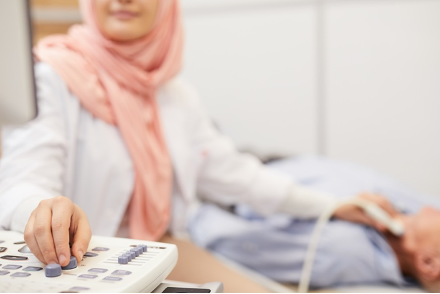
An automated ultrasound image acquisition method to optimize acquisition time
Value Proposition
Ultrasound imaging is widely used for medical diagnostics and to guide and inform other medical procedures. While conventional B-Mode and harmonic ultrasound imaging are low-energy modes, some ultrasound imaging techniques, such as Acoustic Force Radiation (ARFI) and Shear Wave Elastography (SWEI), use high energy ultrasound pulses to generate movement of tissue. When operating in such high energy modes and/or in situations when tissue is in motion, as in the case of cardio-sonography, it would be advantageous to optimize the acquisition time and the position of the ultrasound transducer to increase the image quality and to reduce the patient acoustic energy exposure. However, searching for optimized parameters to perform efficient scans takes significant time even for an experienced sonographer. In addition, simultaneous positioning of ultrasound transducer and operating the control panel while searching for optimal parameters can be ergonomically taxing.
Technology
The lab of Gregg Trahey has developed a method that enables automated triggering of ultrasound image acquisition when conditions are most favorable. This technology is intended to be used by sonographers to collect quality images in less time. The method uses parameters including novel statistical correlators such as Lag-One Coherence derived from low-energy ultrasound image sets to adaptively adjust, in real- or near-real-time, the parameters and timing for a high energy ultra- sound acquisition. This allows detection imaging to automatically trigger acquisition at a moment and tissue position when degrading effects are likely to be minimized. This method was tested clinically in triggering real-time cardiac ARFI imaging, where statistical models of cardiac motion were combined with B-Mode imaging-derived parameters to acquire ARFI datasets when motion and clutter are transiently minimized.
Advantages
- Potentially decreases patient acoustic energy exposure and saves sonographers time
- Allows for automatic image acquisition triggering with optimal parameters
- Clinically tested in transthoracic cardiac imaging